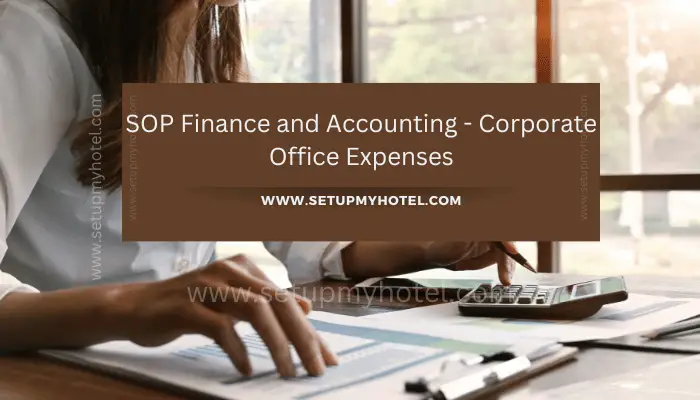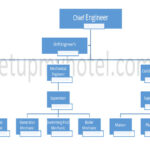Corporate Office Expenses Procedure
Purpose of Corporate Office Expenses:
The SOP Finance and Accounting – Corporate Office Expenses is a document that outlines the policies and procedures related to managing financial transactions related to corporate office expenses. This SOP is designed to ensure that all expenses related to the corporate office are properly documented, approved, and recorded in the accounting system.
The document covers various topics such as the types of expenses that are eligible for reimbursement, the approval process for expense reports, the documentation required to support expenses, and the timelines for submitting expense reports. It also provides guidance on how to handle expenses that are not eligible for reimbursement and the consequences of non-compliance with the policy.
By following the SOP Finance and Accounting – Corporate Office Expenses, organizations can ensure that they are managing their finances in a responsible and transparent manner. This will help to maintain the financial health of the organization and build trust with stakeholders.
The purpose of this policy is to standardize the coding related to Corporate Office billings. It is the responsibility of the ControllerThe financial Controller�manager is in charge of all accounting functions of a hotel. Duties inclu.../General ManagerManager is a person in the hotel operations who is assigned to manage or supervise a group of employ... to verify central office billings.
Corporate Office Expenses SOP Procedures:
Corporate Accounting will E-mailE-mail is a communication system that uses an electronic network to send messages via computers. the property-related expenses to the Controller’s attention the first week of the month. The following guidelines should be used when coding central office expenses and pass-through charges:
1. Travel and entertainment billings for corporate employees – ChargePayment on Credit to T&E.
2. Photocopies – Charge to A&G photocopy expense.
3. Long distance (phone expense) – Charge to A&G telephone expense.
4. Non-corporate employees – Charge to the appropriate department and the proper expense account within the department that benefited from the service.
5. Forms/Supplies – Charge to appropriate department and expense. These are normally pass-through items.
6. Star reports – Charge to Sales & Marketing.
7. Other expenses should be coded to related line items. If information is unclear, call Corporate for direction.
Training Summary Questions:
Q1. Who is responsible for verifying central office billings.?
Q2. What are the guidelines for coding central office expenses and pass-through charges?
Q3. Where to charge star reports?
Q4. Where to contact if the information is unclear?
Patreon Only SOP Download
SOP Number: Finance and Accounting SOP – 16 Department: Financial Control Date Issued: 8-Aug-2021 Time to Train: 15 Minutes












